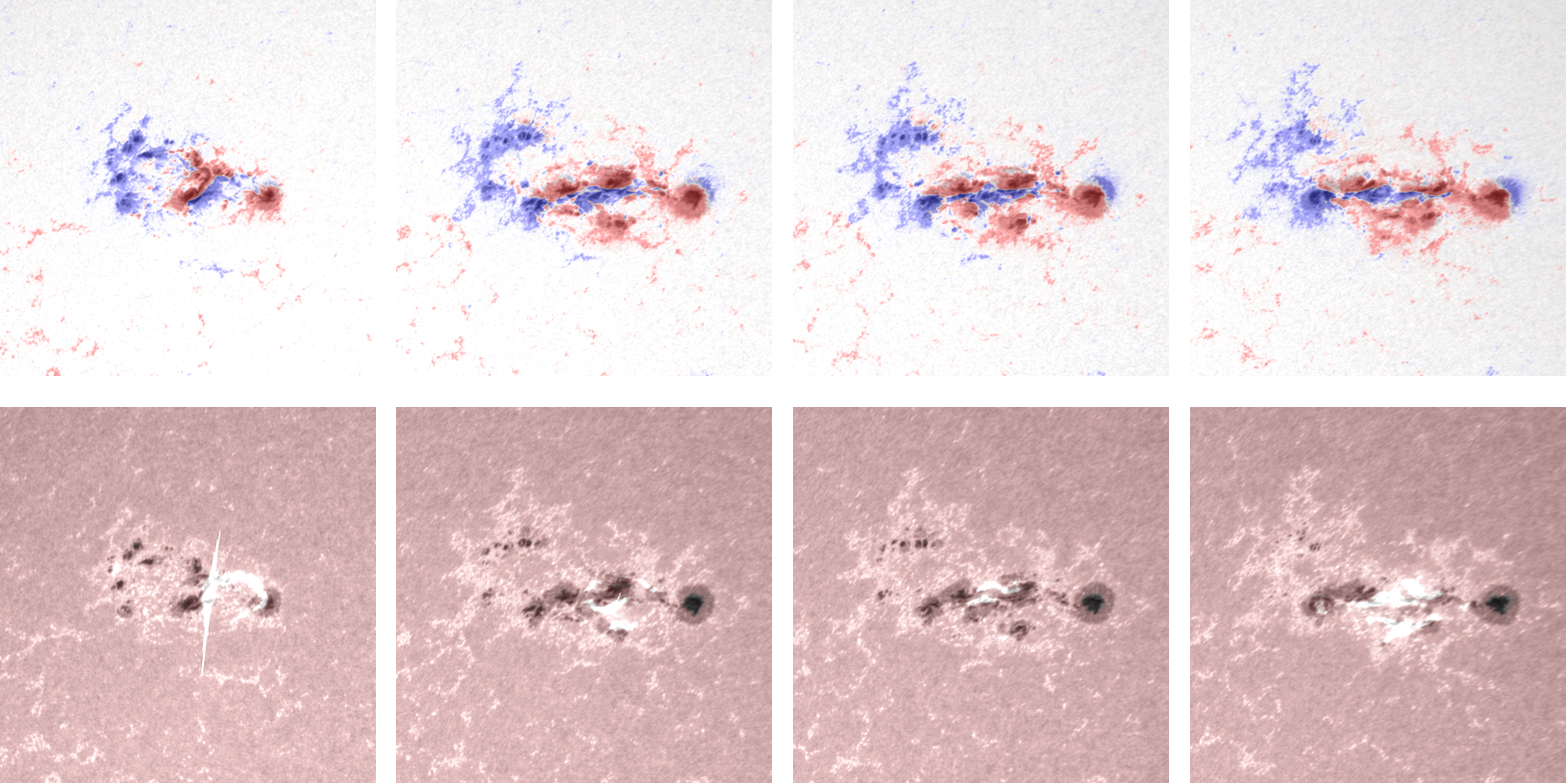The strong solar flare activity from NOAA 3663 has been discussed in this STCE Newsflash. On 6 May, the region produced its 4th and -so far- strongest X-class flare during its solar transit. The long-duration X4.5 flare peaked at 06:35UTC. It is the 3rd strongest flare so far this solar cycle (SC25), after the X6.3 flare from NOAA 3590 on 22 February this year, and the X5.0 flare from NOAA 3536 on 31 December 2023. The imagery underneath combines semi-transparent extreme ultraviolet (EUV) pictures taken by SDO/AIA 171 (temperatures around 700.000 degrees) with white lights pictures. It shows the location of the X4 flare and the subsequent development of post-flare coronal loops. STEREO-A coronagraphic images show an associated coronal mass ejection (CME) of which the bulk is mostly directed northward. The SIDC forecaster is further analyzing the images as they become available.

During the 1-5 May period, NOAA 3663 produced also 17 M-class flares ("medium"), some of which were flirting with the X-class level threshold. The fuel for all this solar flare frenzy came (is still coming...) from the strong and dynamic magnetic delta structure that NOAA 3663 developed. A sunspot group is said to contain a delta structure when there is at least one mature spot present in which umbrae of opposite polarities are separated by less than 2° and are situated within the common penumbra. Delta regions have a much higher flaring probability than the other regions. The top row in the imagery underneath shows a semi-transparent magnetogram overlaid on white light images of NOAA 3663. Red indicates positive magnetic polarity (field lines coming out of the Sun), blue represents negative magnetic polarity (field lines returning into the Sun). These images are about 10-30 minutes prior to each of the 4 X-class events. The bottom row then shows the location of the flare ribbons by overlaying AIA 1700 over the white light images close to the maximum of each X-class flare. AIA1700 shows the inner atmosphere of the Sun right above its surface, at temperatures near 5000 degrees. The ribbons are usually parallel to the magnetic inversion line, i.e. the line separating positive from negative magnetic polarities and near which flaring activity usually takes place. The clips show the evolution of the magnetic delta in NOAA 3663 (2-6 May) and the X4 event in AIA1700 / White Light.

 |  |
Similar to the X1.3 flare, this X4 event affected High Frequency (HF) communications over the western portion of Australia, Southeast Asia, China, Japan, Russia, India, the Arabian peninsula and East-Africa (D-RAP). An advisory for disturbed HF Com has been sent by ACFJ (consortium of Australia, Canada, France and Japan) to the civil aviation through PECASUS. Magnetometer stations in India and Asia (Intermagnet (BGS)) recorded a solar flare effect of 5-20 nT. Further strong flaring from NOAA 3663 can be expected as long as the potent magnetic delta structure remains present.
